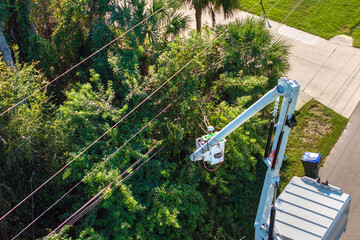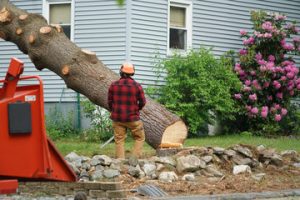Trees are more than just a backdrop for your property. They provide shade, improve air quality, enhance curb appeal, and offer a sense of tranquility. However, trees require regular care to remain healthy and safe. That’s where tree services come in—offering specialized care to ensure your landscape thrives for years to come. Whether it’s pruning, removal, planting, or disease management, tree services help maintain the beauty and structural integrity of your outdoor environment.

Why Tree Services Matter
Healthy trees contribute to a balanced ecosystem and increase property value. However, without proper care, they can become hazardous, diseased, or unsightly. Professional tree services ensure that trees receive the attention they need at every stage of life. This includes identifying potential risks, promoting growth, and preventing issues that could damage your property or endanger people nearby.
Regular tree maintenance is also an investment. Well-cared-for trees live longer, resist pests and diseases more effectively, and continue to offer aesthetic and environmental benefits.
Pruning for Health and Beauty
Pruning is one of the most common and essential tree services. By selectively removing dead, diseased, or overgrown branches, pruning encourages healthy growth and improves a tree’s structure. This not only enhances the tree’s appearance but also reduces the risk of falling limbs during storms.
Proper pruning also allows more sunlight and air to circulate through the canopy, which helps prevent fungal diseases and supports overall tree health. When done by skilled professionals, pruning can shape a tree beautifully without compromising its stability.
Tree Removal for Safety and Space
Sometimes, removing a tree is necessary. A tree might be severely diseased, damaged beyond repair, or growing too close to buildings, power lines, or other structures. In such cases, removal prevents potential accidents and makes room for new landscaping opportunities.
Professional tree removal ensures safety. Experts use specialized equipment and techniques to bring down trees without causing damage to surrounding property. They can also handle stump grinding or removal to leave your yard clean and ready for its next use.
Planting and Transplanting Trees
Tree services aren’t just about maintenance and removal—they also help with planting. Choosing the right tree species for your climate, soil, and space is crucial for long-term success. Professionals can guide you through selection and planting, ensuring proper placement and care from the start.
Transplanting is another specialized service. If a tree needs to be relocated, experts can move it safely with minimal stress, giving it the best chance to thrive in its new location. This is especially valuable for preserving mature trees during construction or landscaping changes.
Disease and Pest Management
Trees, like any living organism, are susceptible to disease and pests. Without proper management, these issues can spread quickly, weakening or killing trees. Professional tree services can diagnose problems early and recommend effective treatments, from pruning infected branches to applying eco-friendly solutions.
Preventive care is just as important. Regular inspections can identify risks before they escalate, saving you time, money, and potentially your favorite trees. By managing pests and diseases proactively, tree care specialists help maintain a vibrant and resilient landscape.
Emergency Tree Services
Storms, high winds, and other natural events can cause unexpected damage to trees. Broken branches, leaning trunks, or fallen trees can block driveways, damage structures, or create safety hazards. Many tree service providers offer emergency assistance to handle these situations quickly and safely.
Prompt response to tree emergencies minimizes further damage and ensures your property remains secure. Professionals can also assess the health of damaged trees and recommend whether they should be saved or removed.
Enhancing Property Value and Aesthetic Appeal
Well-maintained trees dramatically improve curb appeal. They frame your home, add character to your yard, and create inviting outdoor spaces. Professional tree services can shape your landscape with strategic pruning, planting, and removal to highlight its best features.
Healthy trees also increase property value. Prospective buyers appreciate mature, well-kept landscaping, which signals that a property has been cared for overall. Investing in tree services can pay off both immediately and in the long term.
Safety and Liability Considerations
Neglected trees can pose serious risks. Overgrown branches can damage roofs, interfere with power lines, or obstruct walkways. Weak or dead trees are more likely to topple in storms, potentially causing injury or property damage.
By scheduling regular tree inspections and maintenance, you reduce the risk of accidents and liability. Tree service professionals are trained to identify hazards and address them before they become emergencies, keeping your property safe for family, guests, and neighbors.
Sustainable Tree Care Practices
Modern tree services often emphasize sustainability. This includes using eco-friendly pest management techniques, recycling removed wood into mulch, and recommending tree species suited to local environments. Sustainable tree care not only benefits your landscape but also supports broader environmental health.
Planting native trees, reducing chemical use, and promoting biodiversity are all practices that enhance the long-term vitality of your property and the surrounding ecosystem.
Choosing the Right Tree Service Provider
While tree care can seem straightforward, it often requires specialized skills and equipment. Hiring professionals ensures that work is done safely and correctly. When choosing a tree service provider, consider factors such as experience, training, safety practices, and customer reviews.
Ask about certifications, insurance, and the specific services they offer. A reputable provider will be transparent about costs, timelines, and procedures. Investing in quality service now can prevent costly mistakes later.
Long-Term Benefits of Professional Tree Care
Tree services are not just a one-time task—they’re an ongoing commitment to your property’s health and beauty. Regular maintenance prevents problems from developing and ensures that your trees continue to grow strong and healthy.
In addition to aesthetic and safety benefits, proper tree care contributes to cleaner air, reduced energy costs (through shade), and improved wildlife habitats. Trees are a long-term investment, and professional services help protect and maximize that investment.
Creating a Thriving Landscape
Your outdoor space is an extension of your home, and trees are a defining feature of that space. By investing in professional tree services, you’re not only enhancing your property’s appearance but also ensuring the safety, health, and longevity of your trees.
From pruning and removal to planting and disease management, tree care specialists bring the expertise needed to keep your landscape thriving. With consistent attention and sustainable practices, your trees can provide beauty, comfort, and value for generations to come.
